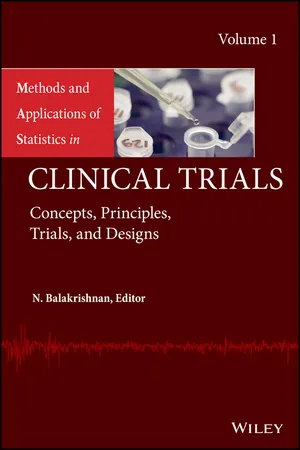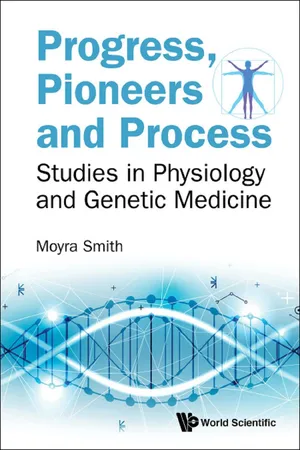Biological Sciences
Gene Therapy
Gene therapy is a technique that involves introducing genetic material into a patient's cells to treat or prevent disease. This can be achieved by replacing a faulty gene with a healthy one, inactivating a malfunctioning gene, or introducing a new gene to help the body fight a disease. Gene therapy holds promise for treating a wide range of genetic disorders and other diseases.
Written by Perlego with AI-assistance
Related key terms
5 Key excerpts on "Gene Therapy"
- eBook - ePub
Molecular Medicine
An Introduction
- Jens Kurreck, Cy Aaron Stein(Authors)
- 2015(Publication Date)
- Wiley-Blackwell(Publisher)
However, advances in vector technology are likely to overcome these obstacles in the near future. The term Gene Therapy refers to the transfer of genetic material into the cells of an individual's body with the intention of treating a disease. Classically, the affected patient carries a defective gene, the cause of the disease. The methods of molecular biology can be used to transfer the functional form of the gene to hopefully correct the defect (Figure 11.1). Examples of Gene Therapy include correction of metabolic functions, the replacement of missing blood coagulation factors, or the transfer of tumor suppressor genes for the treatment of cancer. In addition, Gene Therapy can be used to create cells with novel properties. For example, the body's own defense mechanisms against tumor cells can be triggered by the use of genes encoding cytokines. Genes for enzymes can be transferred, which convert the inactive precursor of a drug (prodrug) into the active form. DNA vaccination involves transferring viral genes, which trigger an immune response against the virus. Indeed, any transfer of nucleic acids designed to manipulate genes or to regulate gene expression may also be considered Gene Therapy. Examples also include antisense and RNA interference therapies, which will be addressed in Chapter 13. Fig. 11.1 Principles of Gene Therapy. Due to a defective gene, a protein may not be produced in the cells of the affected patient. With the aid of vectors, the intact version of the gene can be introduced into these cells. Whether or not the therapeutic gene is integrated into the genome of the host or remains episomal is determined by the choice of vector. The functional gene can then be expressed so that the active protein is synthesized and the defect corrected - eBook - ePub
Methods and Applications of Statistics in Clinical Trials, Volume 1
Concepts, Principles, Trials, and Designs
- N. Balakrishnan(Author)
- 2014(Publication Date)
- Wiley(Publisher)
Chapter 33 Gene Therapy Samantha L. Ginn and Ian E. Alexander 33.1 Introduction Gene Therapy is defined by the United Kingdom’s Gene Therapy Advisory Committee as “the deliberate introduction of genetic material into human somatic cells for therapeutic, prophylactic or diagnostic purposes” [1] and was conceived, originally, as an approach for the treatment of inherited monogenic diseases. Ongoing improvements in gene-transfer technologies and biosafety have been accompanied by a growing appreciation of the broader scope of Gene Therapy. Pathophysiological processes such as wound healing [2, 3], chronic pain [4] and inflammation [5, 6], cancer [7–9], and acquired infections such as HIV-1 [10] are now becoming realistic targets for this promising therapeutic modality. The first authorised gene transfer study took place at the National Institutes of Health (NIH) in 1989. In this marker study, tumor-infiltrating lymphocytes were harvested, genetically tagged using a 7-retroviral vector, and reinfused with the intention of examining the tumor-homing capacity of these cells. This landmark study provided the first direct evidence that human cells could be genetically modified and returned to a patient without harm [11]. Since then, over 1800 trials have been approved, initiated, or completed worldwide [12], with the majority being in the United States [13, 14]. Most studies have focused on cancer, with monogenic and cardiovascular diseases the next most frequent indications (Table 1). These predominantly early-phase trials have provided invaluable proof-of-concept for Gene Therapy by confirming that desired changes to the target cell phenotype can be achieved successfully. In most trials, however, an insufficient number of cells have been genetically modified to achieve therapeutic benefit - P. Piguet, P. Poindron(Authors)
- 2012(Publication Date)
- S. Karger(Publisher)
3 ]. It was first conceived as a treatment for hereditary single-gene defects, but gene replacement or repair can bring permanent relief in a number of other disorders. Therefore, Gene Therapy is also being developed for (1) acquired diseases such as cancer, (2) cardiovascular diseases, or (3) neurodegenerative disorders including Alzheimer’s, Parkinson’s and Huntington’s diseases, and (4) infectious diseases. In the future, Gene Therapy approach may allow doctors to treat a disorder by inserting a gene into a patient’s cells instead of using drugs or surgery.Although Gene Therapy is a promising treatment strategy for a number of diseases, it is still considered an experimental strategy and the technique remains risky and is still under study to assess its safety and effectiveness. Gene Therapy is currently only being tested for the treatment of diseases at an advanced stage that have no other cure.What Is Gene Therapy?
The science of Gene Therapy relies on the introduction of genes to cure a defect or slow down the progression of a disease and thereby improve the quality of life. Today, Gene Therapy is still considered an experimental strategy. But, its extraordinary evolution suggests that in the near future, this approach may allow doctors to treat a disorder by inserting a gene into patient’s cells instead of using conventional drugs or surgery.Researchers actively study and test several options for Gene Therapy applications, including: – Replacing a mutated gene that causes disease with a healthy copy of the corresponding gene. – Inactivating, or ‘knocking out’, a mutated gene that is functioning improperly. – Introducing a new gene into the body to help fight a disease.During the last decades, intensive research in the area of Gene Therapy has been conducted worldwide with the first approved Gene Therapy clinical trial in 1990. In this study, the adenosine deaminase (ADA) gene was transferred into T cells of two children with severe combined immunodeficiency (ADA-SCID) [4 ].Several hundred clinical studies in Gene Therapy have now been performed. These trials have shown that there are still several major factors that prevent Gene Therapy from becoming a routine way to treat genetic conditions and disorders. Cancer Gene Therapy represents one of the most rapidly developing areas in pre-clinical and clinical cancer research. However, some problems need to be solved before this strategy becomes routinely adopted in clinic. Two of the most important problems are low efficiency of gene transfer and lack of selectivity of the existing vectors.- eBook - ePub
Progress, Pioneers and Process
Studies in Physiology and Genetic Medicine
- Moyra Smith(Author)
- 2018(Publication Date)
- WSPC(Publisher)
Chapter 12 Gene Therapy, Antisense Therapy, and Gene Editing In this chapter, Gene Therapy, use of nucleotides in antisense therapy, and gene editing will each be discussed in separate sections. 12.1 Gene Therapy: Routes of Administration Gene Therapy is sometimes carried out using ex vivo transfer of the therapeutic gene to patients’ cells; these can include peripheral blood cells, often patient’s bone marrow stem cells are used. In some cases, Gene Therapy has been directly administered, for example through intravenous injection or intrathecal injection (see Fig. 12.1). 12.2 Viral Vectors for Gene Therapy Advances in Gene Therapy have developed through identification of causative gene defects associated with specific genetic diseases and through identification of treatment targets. In addition, suitable methods have been developed to introduce normal versions of the defective gene into specific cells in affected patients. Choudhury et al. (2016) reviewed progress in identifying suitable viral vectors to carry the corrective gene into cells and vectors that can be used to introduce inhibitory RNAs to target specific abnormal genes. Suitable vectors for delivery include adeno-associated viruses and specific lentiviral vectors. The adeno-associated viral vectors do not integrate into the host chromosomes. Lentiviral vectors used to carry genes do become integrated into host chromosomes. Fig. 12.1. Stem cell therapy and Gene Therapy. Choudhury et al. (2016, 2017) emphasized that the size of the transgene that can be inserted varies in different viral vectors. The maximum size of a transgene that can be inserted into an adeno-associated virus is 4.5 kb. The maximum transgene size that can be inserted into a lentiviral vector is 8.5 kb. Lentiviral vectors include gutted forms of the human immunodeficiency virus (HIV)-type viruses - eBook - ePub
- Tom Strachan, Anneke Lucassen(Authors)
- 2022(Publication Date)
- CRC Press(Publisher)
Chapter 10 . Here we focus on Gene Therapy for inherited disorders where the approach is to modify the disease cells genetically.Other Gene Therapy trials have been split almost equally between monogenic disorders, complex cardiovascular diseases, infectious diseases, and other categories. However, only 3 % of the listed trials are phase III trials, in which the efficacy of the therapy is tested on a large scale. Despite the limited number of trials, monogenic diseases have always been high on the Gene Therapy agenda, and the first definitive successes have been in that area.Multiple successes for ex vivo gene supplementation therapy targeted at hematopoietic stem cells
Successful ex vivo Gene Therapy trials have been carried out for various blood disorders and some storage disorders by targeting bone marrow cells or peripheral blood lymphocytes enriched for hematopoietic stem cells. Our blood cells are short-lived and need to be replaced by new cells derived from self-renewing hematopoietic stem cells. These cells, which are found mostly in the bone marrow (and to a smaller extent in peripheral blood), give rise to all of the many different types of blood cell and also to some tissue cells with immune functions (Figure 9.17 ).For some disorders treated in this way, alternative treatments have sometimes been used, but they are either very expensive or very risky (see below). For some blood disorders, treatment with purified gene product (such as recombinant proteins) is an option, but it is extremely expensive. Bone marrow transplantation has occasionally been used.
Learn about this page
Index pages curate the most relevant extracts from our library of academic textbooks. They’ve been created using an in-house natural language model (NLM), each adding context and meaning to key research topics.




